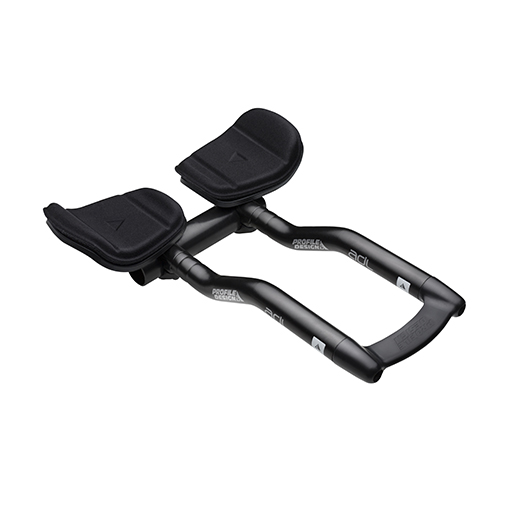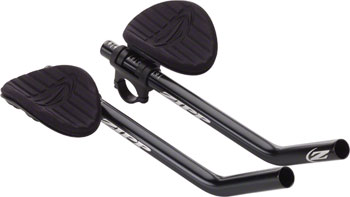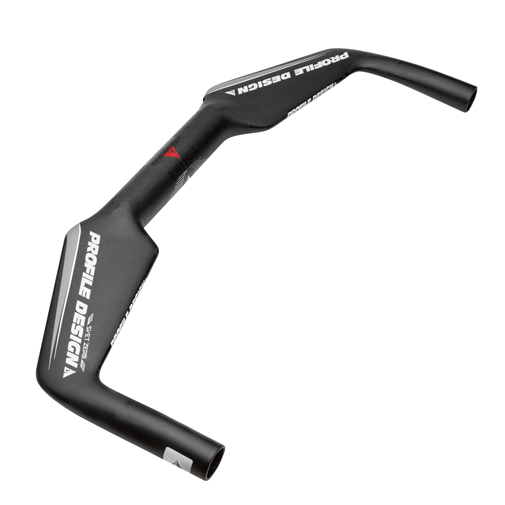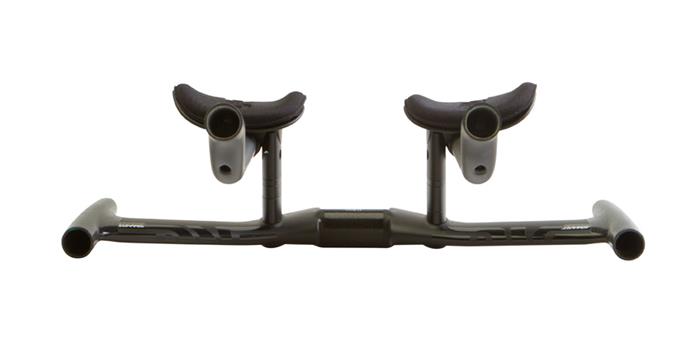How To Select Aerobars For Triathlon distance sprint to IM
Posted by Matt Russ on 19th May 2016
Aerobars vary widely in design, comfort, adjustability, weight and price. It is important to choose the right aerobar for the type of triathlon or time trial event and training you will be doing. With so many designs and price points, selecting the best bar for your needs can be confusing.

First and foremost, there is a difference between a time trial bar designed for short course speed and one engineered for long course triathlon. Time trial bars are constructed for use in bike races or triathlons generally under 40k in distance and without long term comfort in mind. They are more no frills, and there may be little or no adjustment to the extension, pads, or pad width. Some time trial bars are completely fixed with no adjustment at all. Sizing may be in small, medium, and large increments and pads are generally thinner and lower profile. This type of bar may be suitable for short course multi-sport events, but it may not be a good option for spending hours on top of, unless it fits you very well (or you fit to it rather). Aerobars designed for long course triathlon are considerably more adjustable and incorporate more comfortable pads. If your tri shop builds their bikes from frame sets, make sure you are getting a bar that is geared more towards triathlon comfort and adjustability. TT bars tend to be less expensive and may be used as a means to keep costs down and profits up.
Once you have selected the right type of aerobar for your event, the
differences are

again going to be in extension shape, adjustability, comfort, aerodynamics, weight, and, of course, price. You have to find the right balance of these components to suit your needs. The most expensive aerobar is not necessarily the most comfortable or adjustable, in fact in some cases they can be more difficult to work with. An infinitely adjustable bar permits “just right” placement of the shifters into your hands and pads where you want them on your forearms. The extensions will telescope and rotate allowing you to put them exactly where they feel best. This also mitigates the need to change out stems for cockpit reach adjustment. Depending on the brand, the pads may be able to rotate slightly, adjust to different widths, and can be shimmed to different heights. It is important to note that shimming the pads in not the preferred method of increasing height as it changes the wrist angle. For this reason, newer cockpit designs incorporate risor kits that raise the entire aerobar- pads and extensions. Check the difference in pad thickness, width, and even cover from brand to brand. A wider and thicker pad distributes upper body weight more effectively and leaves room for a bit of movement. I have found this design works much better for the long course comfort. The aerobar extension shapes vary from a strait bar, to an “s” bend, to a “j” bend, to others inbetween. The presumption is that a strait extension is more aerodynamic, but this is not necessarily the case. In fact some athletes show less aerodynamic drag in the wind tunnel using a “j” bend, and J-bends may be more ergonomic and comfortable. An "s" bend may allow more leverage, suitable for short course power and time trialing, but you should choose your extension shape based foremost on comfort, and what fits your body type.
 In terms of weight, a carbon fiber bar will be slightly lighter than
aluminum and also has the added benefit of dampening road vibration. However,
carbon bars are more expensive. “Clip on” bars can be added to any road, base
or pursuit bar allowing a greater combination of components. The downside of a clip on is
that there is a slight increase in weight, and there are more exposed parts to create aerodynamic drag. The most expensive aerobars are full carbon
monocoque designs. These combine all the components of the front end, including
the brakes, into a single piece of carbon fiber. Clamps and bolt heads are
eliminated from the slip stream and cables are internally routed. These bars
are the most “clean” but the aerodynamics advantage is still minimal; and these bars
can cost upwards of $1000. Adjustment is generally good for top of the line aerobars, but you
pay a large premium to cut a small amount of drag (perhaps a few seconds in race
time), and you have to decide what that is worth to you. It is important to note that your ability to put the body in a more aerodynamic position, specifically a lower torso, trumps any reduction in aerodynamic drag produced by equipment. And a bar or position that is uncomfortable and causes you to "sit up" is going to cause the most drag!
In terms of weight, a carbon fiber bar will be slightly lighter than
aluminum and also has the added benefit of dampening road vibration. However,
carbon bars are more expensive. “Clip on” bars can be added to any road, base
or pursuit bar allowing a greater combination of components. The downside of a clip on is
that there is a slight increase in weight, and there are more exposed parts to create aerodynamic drag. The most expensive aerobars are full carbon
monocoque designs. These combine all the components of the front end, including
the brakes, into a single piece of carbon fiber. Clamps and bolt heads are
eliminated from the slip stream and cables are internally routed. These bars
are the most “clean” but the aerodynamics advantage is still minimal; and these bars
can cost upwards of $1000. Adjustment is generally good for top of the line aerobars, but you
pay a large premium to cut a small amount of drag (perhaps a few seconds in race
time), and you have to decide what that is worth to you. It is important to note that your ability to put the body in a more aerodynamic position, specifically a lower torso, trumps any reduction in aerodynamic drag produced by equipment. And a bar or position that is uncomfortable and causes you to "sit up" is going to cause the most drag!

Pursuit or base bars vary widely in design as well. If you use a tri bike and train/race on hilly courses in which you sit or stand up, the amount of extension may be important to you. Some base bars have a very small grip surface; just enough to brake effectively, whereas others may be as long as 6 inches or more. A longer extension means more hand positions and may be better for out-of-the-saddle efforts. Some athletes don't feel comfortable with a short base bar as they feel their hands will slide forward off the bar when sweaty. Pursuit bars come in a lot of shapes, sizes, and drops as well, but I find that the bars with lower drop are more suitable to time trialing in which sprinting may be involved. As a cost savings you may be able to mate a carbon base bar to an aluminum clip on and still get some of the vibration dampening affect of carbon.

A good place to start in the selection process is price point. If you are purchasing a new bike, make sure it comes with an aerobar that will be comfortable for the distance you are training for. It is better to pay a slight up-charge for a bar swap initially versus the cost and labor charge for replacement down the road. Once you have them on your bike, make sure they are adjusted properly. A professional fitting will ensure this, however, you need to interact with and give feedback to the fitter as part of the process. I recommend a fitter that is experience and trained in TT/Triathlon fits specifically as they are generally more complicated. Athletes will often make adjustments to their position with the presumption that it will make them more aerodynamic (ex. bars close together). Even if drag were to be slightly reduced, an uncomfortable position will outweigh any slight advantage in aerodynamics. A good rule of thumb is that if you "lay" your body on the aerobars the position should match that of your body naturally, meaning it should be comfortable, you should not have to reach or alter your position to shift, and you should not have a lot of tension in your shoulders. If you feel stretched or even slightly uncomfortable this will only be amplified over the miles.

